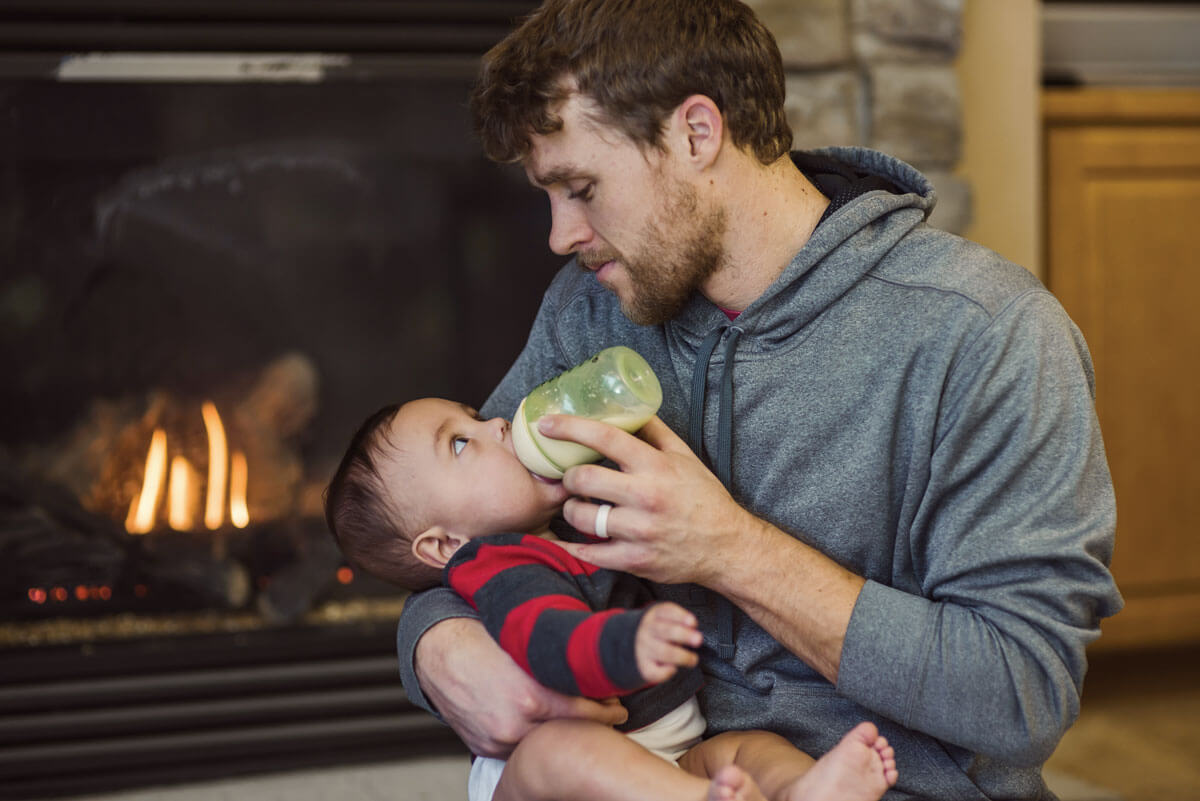Teaching your breastfed baby to take a bottle.
- Home
- Ellyn Satter
- Newborn / Infant
- Frequently Asked Questions
- Teaching your breastfed baby to take a bottle


You may be more comfortable if your baby knows how to take a bottle. By the time he is 4 to 6 weeks old you will both be good at breastfeeding. Teaching him to suck from the bottle won’t confuse him about breastfeeding.
Plan on at least 10 practice sessions before your baby takes even a few swallows. He has a lot to learn. The rubber nipple doesn’t feel like a breast nipple. To make the rubber nipple work, he has to suck and swallow in a whole different way. If there is formula in the bottle, it tastes different from breastmilk.

Don’t get pushy or it will slow his learning. After a few lessons, he will get something out of the nipple. After a while, he will learn to suck, swallow, and take enough from the bottle to at least get by until Mom gets home.
© Ellyn Satter
HAND EXPRESSION
How it works
Use your hand to gently massage and compress your breast to remove milk.
What’s Involved
Average Cost
Free
Side-Lying Hold
This hold is useful when:
Cross-Cradle Hold
This hold is useful when:
Clutch or “Football” Hold
This hold is useful when:
Cradle Hold
This hold is useful when:
Laid-Back Hold
This hold is useful when: